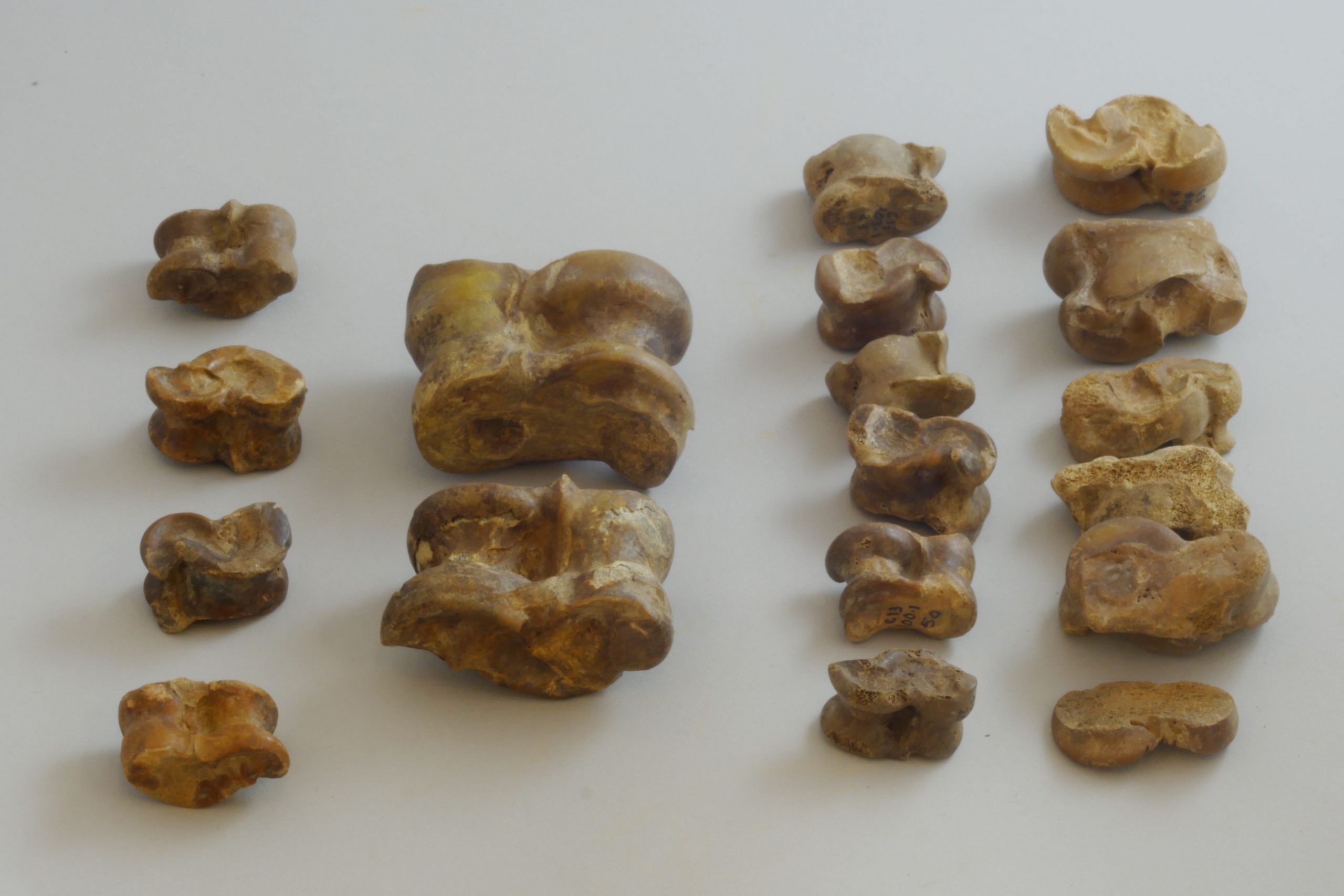
Etruscan Cetamura
Astragali
Period | Etruscan |
Year | ca. 300 – 50 BCE |
Material | Bone gaming pieces |
Location | Well #1 |
Cet. Inventory |
In the ancient world “knucklebones”, or better, astragali, were made from the ankle bones of roe deer, red deer, sheep/goat, and pig (left to right in photo) as well as cow. They have four sides and thus were easily used rather like game dice and for making prophecies. So many were found in Well # 1 that it seems likely they were thrown into the well as part of a ritual.
An astragalus (talus in Latin) is a bone in the ankle or hock of an animal (commonly, but incorrectly, called “knucklebone”) that was widely used in the ancient world for games of chance and ritual offerings (Elia and Caré 2004; Gilmour 1997). Prior to the excavations in Well # 1 at Cetamura (2012–2014), only scattered cow, pig, and sheep/goat astragali had been reported on the site, mostly from ritual contexts. Well #1 contained a surprising total of 168 astragali from sheep/goat, pig and boar, cow, and deer, almost all of which came from separate individuals, i.e., only one astragalus per animal. The highest concentrations were found in the Etruscan levels of the well, with the greatest numbers from sheep/goat.
Though few show signs of significant modification or polishing, many are slightly flattened on the lateral sides and most show signs of wear on the contact surfaces. Most are also thermo-altered; this is probably due to boiling of the bones to remove the flesh, which also darkens the bone’s surface. Even though most of these astragali are not modified like those from many Greek and Near Eastern sites, the absence of a sufficient quantity of bones related to the individual astragali argues for their use in divination and against their status as food debris. The astragali may have been thrown into the well as an offering after each consultation, as hypothesized for divinatory tokens or may have been redeposited or dumped from another part of the site where the divination was practiced, since a deep well would not permit a visible landing of the thrown astragali for interpretation. This is the first evidence for astragalomancy from the Chianti region, and perhaps the first from northern Etruria.
Bibl. Elia and Caré 2004; Gilmour 1997.




